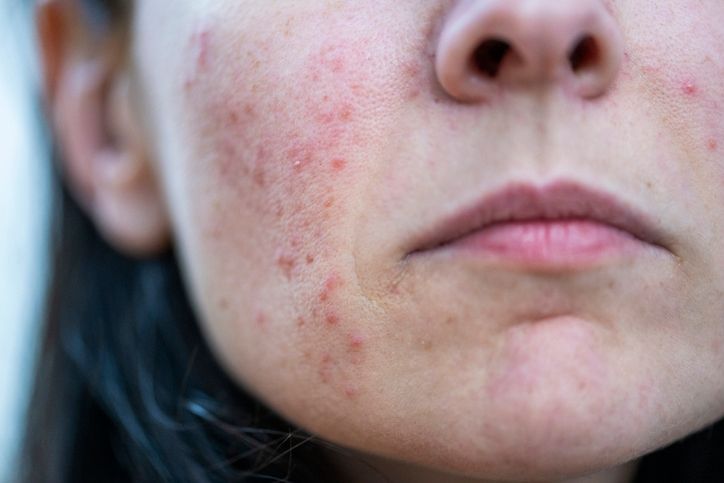
Author: Natalie Ng|Updated: 30 April 2025
After pregnancy, it’s common to notice loose skin—especially around the stomach. Your body just went through a huge change. Skin stretches, muscles shift, and weight gain is normal. But once you’ve given birth and start settling into your postpartum routine, you might wonder how to tighten loose skin without going through a surgical procedure like a tummy tuck. Many women deal with loose abdominal skin, extra skin around the lower abdomen, and sagging skin in other areas. This is all part of how the skin responds to pregnancy, especially if there was rapid weight gain or weight loss. Factors like age, genetics, skin elasticity, and muscle tone all play a role in how your body heals after giving birth. The good news is that you can reduce loose skin and improve skin health naturally. There are safe, non-surgical ways to support collagen production, keep your skin hydrated, and slowly regain strength in your core muscles. With the right skincare routine, a healthy diet, and consistent habits, you can improve skin elasticity and feel more confident in your postpartum body. Keep reading to learn seven proven ways to tighten loose skin after pregnancy—without surgery.

Stay Hydrated and Nourish Your Skin From Within

Loose skin after pregnancy often improves with good hydration and the right nutrition. These two steps help improve skin elasticity, support collagen production, and protect skin health as your body heals after giving birth.
Drink Enough Water Every Day
Keeping your skin hydrated starts from the inside. Aim for 8–10 glasses of water daily. Staying hydrated helps reduce dry skin, supports the deeper layers of skin, and keeps elastin fibres healthy. It also improves how well your body removes toxins and helps reduce loose skin over time.
Focus on Collagen-Boosting Foods
A healthy diet makes a big difference. Eating foods rich in vitamin C supports collagen production. Collagen is a key protein that helps tighten loose skin and repair connective tissue. Include foods like oranges, strawberries, bell peppers, and leafy greens in your meals.
Add Protein for Skin Repair
Protein helps rebuild skin and muscle after pregnancy. It also supports the structure of your skin and reduces the appearance of saggy skin. Add eggs, fish, lean meat, tofu, and legumes to your diet to support skin recovery and strengthen your abdominal muscles.
Use Skincare With Hyaluronic Acid
Topical products with hyaluronic acid help the skin stay moisturized and improve texture. This ingredient helps bind water to the skin, making it look smoother and more elastic. It’s a useful addition to your skincare routine, especially if you're dealing with dry skin or moderate skin laxity.

Targeted Strength Training and Core Exercises
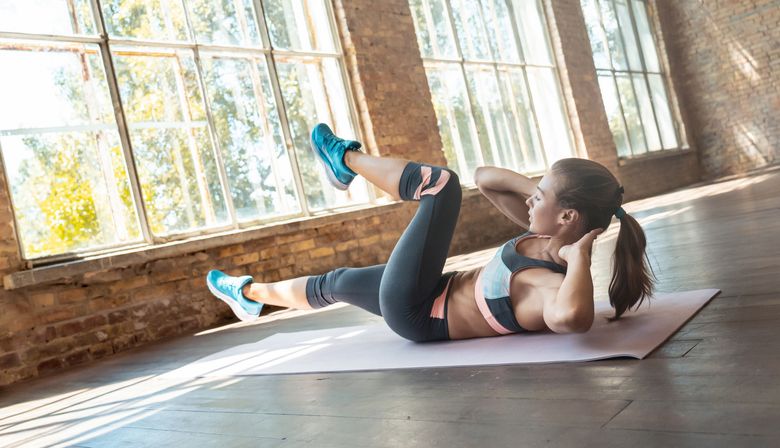
To tighten loose skin after pregnancy, it’s important to rebuild your core muscles. Strength training helps improve muscle tone, reduce stubborn fat, and support the skin around your abdomen. This approach is especially helpful for sagging skin and moderate skin laxity that often appear after giving birth.
How Strength Training Helps With Postpartum Skin
When your core muscles are weak, loose abdominal skin becomes more visible. Strength training helps restore muscle tone and supports the deeper layers of skin and connective tissue. This not only helps tighten loose skin but also improves posture and balance, which are often affected by pregnancy.
Start with two to three strength workouts each week. Focus on correct form, steady breathing, and slow, controlled movements. Over time, increase your intensity as your body becomes stronger and adapts.
Best Core Exercises to Support Skin Recovery
Core-focused exercises help tighten the muscles under your postpartum skin and improve skin elasticity. These are simple, low-impact movements you can do at home:
Plank variations – strengthen your entire core and improve stability
Modified crunches – target the upper abdominal muscles safely
Pelvic tilts – activate deep abdominal muscles and support the lower back
Bird dog – builds coordination and supports core strength
Dead bug – improves control and protects the spine
Side planks – tone the obliques and reduce fat around the waist
Bridges – engage the glutes, core, and lower back
Start with 2–3 sets of 10–15 repetitions per exercise. This routine helps reduce excess fat, stimulate collagen production, and support skin health without the need for a surgical procedure like a tummy tuck.
Maintain Proper Form for Best Results
Using proper form helps you get results safely and avoid injury. Follow these basic form rules for each movement:
• Keep your core muscles engaged by pulling your belly button toward your spine
• Maintain a neutral spine to protect your lower back and improve muscle tone
• Exhale on exertion to increase stability and muscle control
• Focus on slow, steady movement rather than rushing through reps
Correct form ensures you're working the muscles under the skin, which helps prevent loose skin from becoming worse and supports gradual improvement.
Read More
Book Now to Experience
S6 Body Sculpting Treatment
1 Minute Self-Registration
Date should not be before minimal date

Collagen-Boosting Foods and Supplements
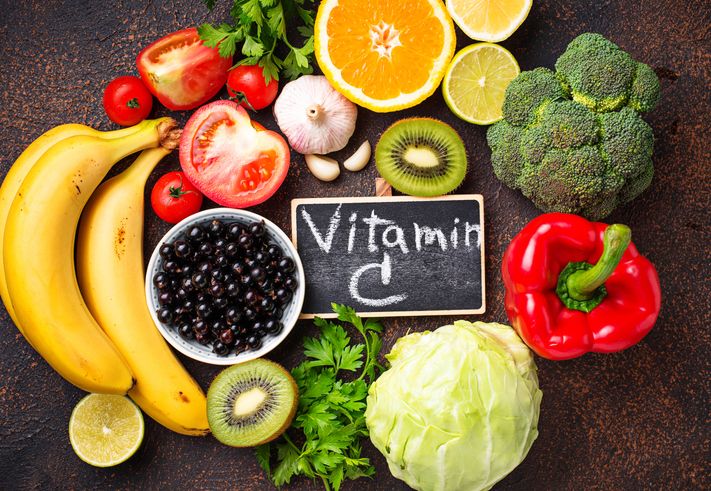
Loose skin after pregnancy is often linked to weakened collagen and elastin fibres. These proteins are essential for skin elasticity and strength. Eating the right foods and adding supplements can help your body rebuild connective tissue and tighten loose abdominal skin over time.
Support Collagen Production With Food
Certain nutrients play a key role in collagen production and overall skin health. A healthy diet helps your body repair skin naturally and can reduce the appearance of stretch marks and sagging skin.
Vitamin C-rich foods Vitamin C supports collagen synthesis. Include citrus fruits, strawberries, kiwi, bell peppers, and broccoli. These foods also protect the skin against damage and help maintain firmness.
Protein-rich sources Collagen is made from amino acids found in protein. Bone broth, fish, eggs, chicken, tofu, and legumes help your body rebuild tissue and improve skin structure.
Zinc-containing foods Zinc supports skin repair and helps the body use collagen efficiently. Add pumpkin seeds, lentils, chickpeas, and oysters to your meals.
Antioxidant-rich vegetables Dark leafy greens like spinach and kale reduce oxidative stress and protect collagen from breaking down.
Consider a Collagen Supplement
A high-quality collagen supplement may help tighten loose skin after pregnancy, especially when combined with exercise and proper nutrition. Look for hydrolyzed collagen (also called collagen peptides), which is easier for your body to absorb.
Taking a daily collagen supplement can support skin elasticity, reduce the look of dry or wrinkled skin, and aid in the repair of connective tissue in the abdominal area.

Dry Brushing and Massage Techniques
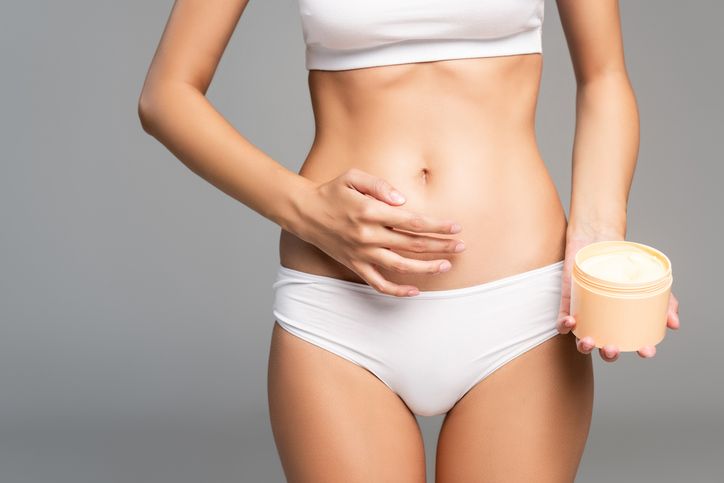
Loose skin after pregnancy can improve with regular dry brushing and massage. These simple techniques help increase blood flow, support lymphatic drainage, and promote healthier skin over time.
How Dry Brushing Supports Skin Health
Dry brushing helps exfoliate dry skin and stimulate circulation in the outer and deeper layers. This boosts oxygen supply to the skin and encourages collagen production, which can gradually improve skin elasticity and reduce the look of sagging skin.
How to dry brush:
• Use a natural-bristle brush on dry skin before showering
• Start at your feet and brush in long strokes toward your heart
• Use light but firm pressure, avoiding broken or sensitive skin
• Focus on areas with loose skin, such as the thighs, arms, and abdominal area
• Do this 2–3 times per week
Dry brushing also helps remove dead skin cells, giving your skin a smoother appearance.
Massage Techniques for Loose Skin
Massage helps break down fatty tissue under the skin and stimulates the production of collagen and elastin fibres. It can also relieve tension and improve how the skin looks and feels during postpartum recovery.
Effective massage tips:
• Use circular motions with your hands or a soft massage tool
• Apply natural oils like coconut oil, almond oil, or vitamin E oil to reduce friction
• Spend extra time on the lower abdomen, where loose abdominal skin and stretch marks are common
• Massage consistently at least three times a week
These methods won’t remove excess skin completely, but they support skin tightening and improve the results of other non-invasive treatments like radiofrequency therapy or ultrasound therapy.
Book Now to Experience
S6 Body Sculpting Treatment
1 Minute Self-Registration
Date should not be before minimal date

Skin-Firming Creams and Natural Remedies
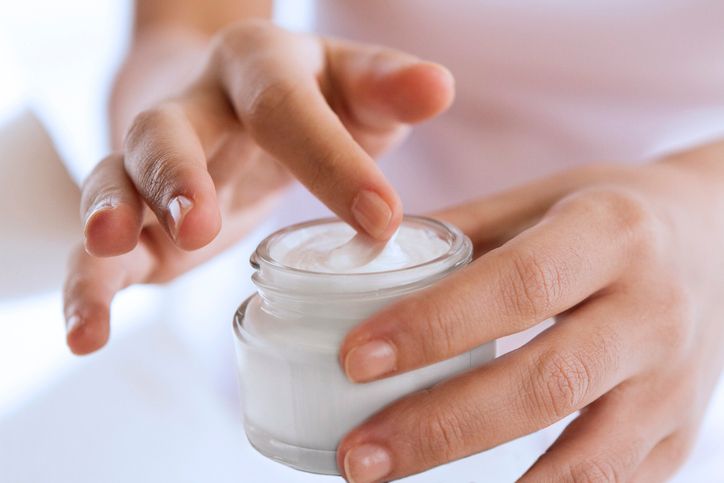
Using skin-firming creams and simple natural remedies can support your skin’s healing process after pregnancy. While these options won’t remove excess skin completely, they can help improve skin elasticity and reduce the appearance of saggy skin, especially in the abdominal area.
Ingredients That Support Tighter Skin
Certain ingredients in creams and oils help the skin retain moisture, stimulate collagen production, and improve firmness over time.
Collagen-based creams Look for creams that contain retinoids or peptides. These ingredients support collagen production, reduce fine lines, and can help tighten loose abdominal skin over time.
Hyaluronic acid This ingredient helps the skin stay hydrated by attracting and holding water. It can improve skin texture and reduce the look of dry or wrinkled skin, especially when used regularly.
Caffeine-infused creams Caffeine helps tighten the skin temporarily by improving blood flow and reducing puffiness. These creams work best for a short-term firming effect.
Natural Oils and Herbal Remedies
Simple ingredients from your kitchen or local store can help nourish the skin and support its recovery.
Aloe vera gel Known for its soothing and healing properties, aloe vera helps moisturize and support the repair of damaged skin.
Coconut oil Rich in fatty acids, coconut oil hydrates dry skin and helps strengthen the skin’s natural barrier.
Vitamin E oil Vitamin E helps protect skin cells and may reduce the appearance of stretch marks and extra skin.
Herbal extracts Green tea and grapeseed extract contain antioxidants that support skin health and protect against damage.

Gradual Weight Loss and Healthy Eating Habits
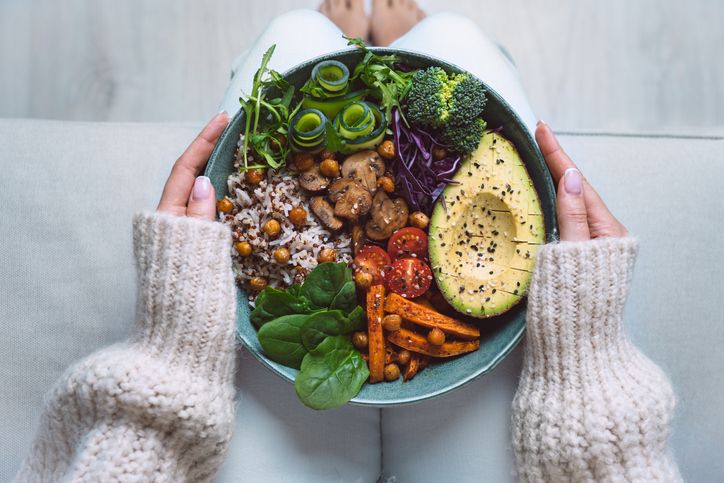
Loose skin after pregnancy can become more noticeable with rapid weight loss. Losing weight slowly gives your skin time to adjust and improves your chances of regaining skin elasticity without needing a surgical procedure.
Why Slow Weight Loss Matters
After pregnancy, your body needs time to recover. Rapid weight loss can lead to more sagging skin, especially in the abdominal area. A gradual approach gives your skin and connective tissue time to tighten naturally.
• Aim to lose 1–2 pounds per week
• Focus on long-term progress rather than quick results
• Avoid extreme calorie restrictions or fad diets
This helps prevent excess skin and supports healthy fat loss while maintaining muscle tone.
Build a Balanced Eating Plan
A healthy diet plays a big role in skin health, collagen production, and energy levels. Focus on whole foods that help rebuild your body from the inside out.
• Lean proteins (chicken, fish, tofu, legumes) help repair tissue and maintain muscle mass
• Fruits and vegetables supply antioxidants and vitamins that protect skin cells
• Whole grains give steady energy and support your metabolism
• Healthy fats (avocado, nuts, olive oil) support hormone balance and skin hydration
• Hydration is essential—keep your skin hydrated with plenty of water throughout the day
Support Core Muscles While Losing Weight
Pair your eating habits with safe postpartum exercises to rebuild abdominal muscles. This strengthens the foundation under your skin, making saggy skin less noticeable and improving overall shape as you lose weight.
The changes from pregnancy took time to develop. Let your body heal gradually and avoid comparing your progress to others.
Book Now to Experience
S6 Body Sculpting Treatment
1 Minute Self-Registration
Date should not be before minimal date

Compression Garments and Proper Postpartum Support
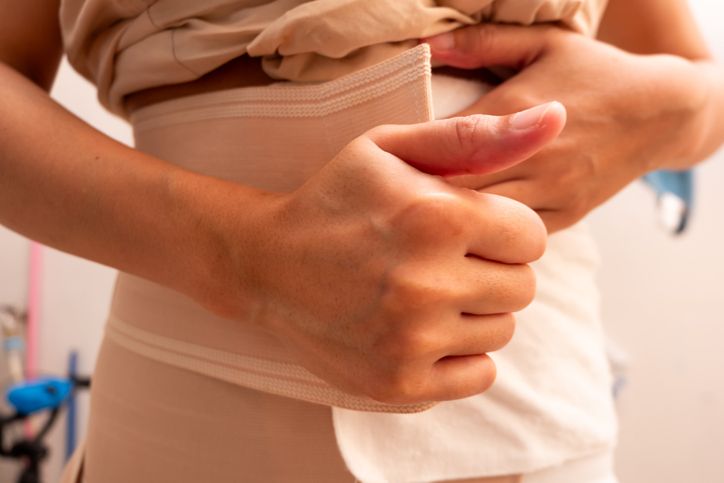
Compression garments offer gentle, steady support to areas affected by loose skin after pregnancy. While they won’t remove excess skin, they can help improve how your body feels and looks during recovery by supporting muscle tone and skin in the lower abdomen.
How Compression Helps
After giving birth, the skin and abdominal muscles are often stretched and weakened. Wearing a compression garment helps by:
• Holding loose abdominal skin in place
• Reducing swelling and fluid retention
• Supporting core muscles during daily movement
• Improving posture and comfort, especially after weight gain and delivery
Wearing these garments can make it easier to move through your day as your body adjusts and heals.
Choosing the Right Compression Garment
Not all compression wear is the same. Choose products made specifically for postpartum use to get the right balance of support and comfort.
• Medical-grade compression is more effective for recovery than standard shapewear
• Postpartum belly wraps and support bands are designed for the lower abdomen
• Avoid tight, restrictive garments that interfere with circulation
• Consult a healthcare professional if you're unsure about the right level of compression
How to Use Compression Safely
• Wear your garment during the day for support, but remove it at night to let your skin breathe
• Replace it when it becomes loose or stretched out
• Use compression as a short-term tool—combine it with exercise, hydration, and proper nutrition for long-term improvement
Compression garments support the healing process and help many women feel more secure as they regain strength. They don’t replace non-surgical treatments or targeted exercise, but they can be part of a well-rounded recovery plan.

Consider New Beauty’s S6 Body Sculpting Treatment for Postpartum Loose Skin
If you’re dealing with loose skin after pregnancy, especially around your belly, thighs, or back, you’re not alone. Many women find that even after losing the baby weight, sagging skin, stubborn fat, and wrinkled skin can stick around. That’s where a non-surgical treatment like S6 Body Sculpting can make a real difference.
How the Treatment Works
The S6 Body Sculpting Treatment uses low-energy bio-laser technology to break down fatty tissue under the skin. The laser targets subcutaneous fat, causing fat cells to release fatty acids that are then flushed out naturally through your lymphatic system. At the same time, the treatment includes vacuum suction to boost circulation and increase your metabolism in the treated area.
As a bonus, the laser also helps stimulate collagen production, which can tighten your loose abdominal skin and improve skin elasticity. This makes it especially helpful if you’re trying to reduce extra skin or moderate skin laxity after pregnancy.
Why It Works for Postpartum Recovery
After giving birth, your core muscles and connective tissue are stretched. You may notice stretch marks, saggy skin, or fatty areas that don’t improve with exercise alone. The S6 treatment helps by:
• Targeting stubborn fat in areas like the belly, waist, thighs, and back
• Supporting skin tightening without the need for surgical procedures
• Helping you reduce excess fat while improving the appearance of your postpartum body
• Enhancing the results of your exercise routine and healthy diet
This is a safe and non-invasive treatment with no downtime, no needles, and no recovery period. You can go back to your usual activities right after each session.
What You Can Expect
A full course typically includes 10–12 sessions, spaced about a month apart. You’ll start to notice changes as your body gradually expels fat cells and builds new collagen. It’s a great option if you want to avoid tummy tuck surgery but still want visible results.
Want help tightening loose skin and reducing stubborn fat after pregnancy? Book your consultation for S6 Body Sculpting and take the next step in your postpartum recovery.
New Beauty's S6 Body Sculpting TreatmentBook Now to Experience
S6 Body Sculpting Treatment
1 Minute Self-Registration
Date should not be before minimal date
FAQ
How Long Does It Typically Take to See Results From Skin-Tightening Methods?
Studies show that 90% of people see initial skin-tightening results within 2-3 months, but your timeline can vary based on your chosen method. You'll notice gradual improvements with consistent natural approaches like exercise and moisturizing over 6-12 months. Non-invasive treatments like radiofrequency typically show results in 3-4 months, while topical treatments may take 4-6 months of regular use to deliver visible improvement.
Can Loose Skin After Pregnancy Go Away Completely on Its Own?
Your postpartum loose skin can partially recover on its own within 6-12 months, but complete natural recovery isn't guaranteed. Factors like genetics, age, weight gain during pregnancy, and skin elasticity influence your skin's ability to bounce back. While you might see some improvement through natural healing processes, most women retain some degree of loose skin that requires targeted interventions like exercise, nutrition, or professional treatments to address fully.
Does Breastfeeding Affect How Quickly Loose Skin Recovers After Pregnancy?
Breastfeeding can positively impact your skin's recovery after pregnancy in several ways. First, it helps burn extra calories and accelerates weight loss, which can improve skin elasticity. Second, the hormones released during breastfeeding, particularly oxytocin, support your body's natural healing processes. However, you'll need to combine breastfeeding with proper nutrition, hydration, and gentle exercise to maximize its benefits for skin recovery.
At What Point Should Someone Consider Surgical Options for Loose Skin?
You should consider surgical options for loose skin when you've maintained a stable weight for at least 6-12 months and tried non-surgical methods like exercise, proper nutrition, and skin-firming treatments without satisfactory results. If your loose skin causes physical discomfort, hygiene issues, or substantially impacts your quality of life, and you're financially prepared for the procedure and recovery time, it's worth consulting a board-certified plastic surgeon to discuss your options.
Do Genetics Play a Role in How Skin Recovers After Pregnancy?
Yes, your genetics substantially influence how your skin recovers after pregnancy. Your inherited factors determine skin elasticity, collagen production, and healing capacity. If your mother or close female relatives experienced good skin recovery post-pregnancy, you're more likely to have similar results. However, genetics aren't destiny - factors like nutrition, hydration, exercise, and skincare can help optimize your skin's natural recovery potential regardless of your genetic predisposition.
Recommended Articles
COPYRIGHT© NEW BEAUTY MANAGEMENT LIMITED 2025. ALL RIGHT RESERVED.

